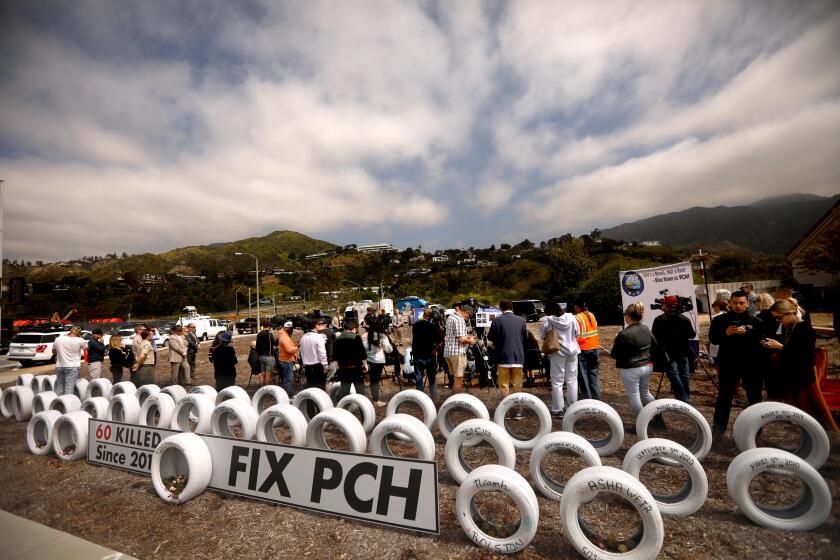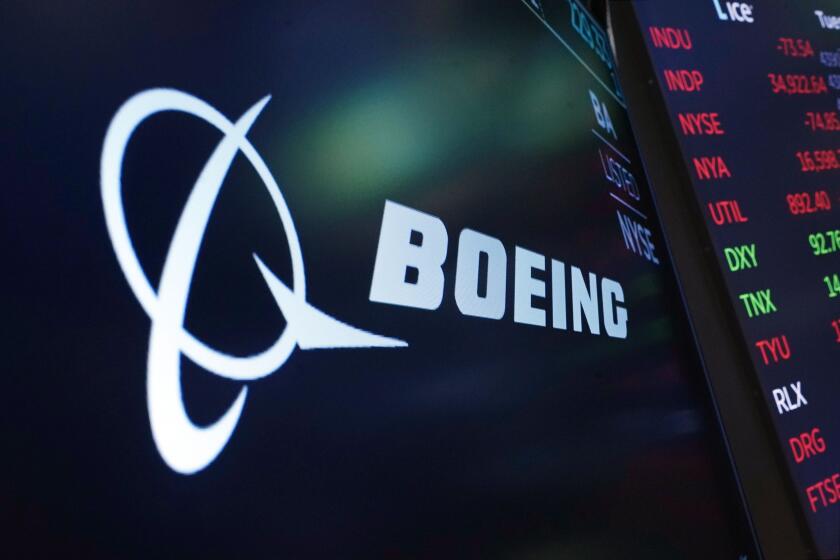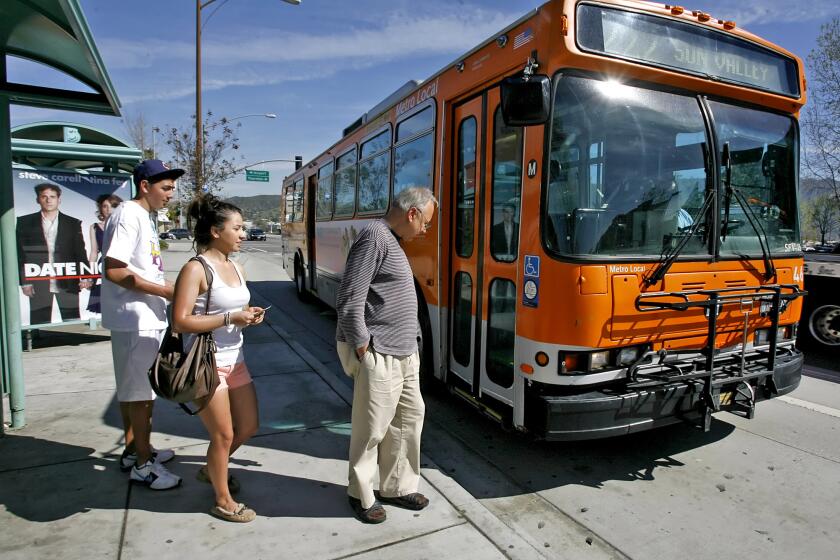Riders Walk Out of MTA Hearing on Bus Lines
Angry members of the Bus Riders Union walked out of a public hearing Saturday after no one on the MTA board initially showed up to hear the concerns of hundreds of people about plans to eliminate, reroute or streamline nearly three dozen bus lines in Los Angeles County.
To cheers and applause, Bus Riders Union activist Cirilo Juarez announced that more than 100 members of the group would leave the hearing at the MTA’s headquarters because none of the 13 directors who will decide the fate of the bus service were present to hear their comments.
“We are wasting our time,” Juarez said. “This is very, very . . . disrespectful to us.”
But before leaving, some in the crowd hissed as MTA Chief Operating Officer Allan Lipsky explained that the agency periodically looks at some bus lines to determine if alternative service could be provided by other transit operators.
If the MTA eliminates or shortens some bus lines, Lipsky said, the agency can take those buses and reallocate them to routes “where they are really needed.” His suggestion that the agency was following the direction of U.S. District Judge Terry J. Hatter Jr. to eliminate overlapping bus service was immediately challenged by the Bus Riders Union.
Juarez said the 1996 consent decree that the MTA signed to avoid a trial on a federal civil rights lawsuit “clearly says increase service, not modify service, not cut service. . . . They are cutting and canceling and for what--to go build their rail.”
After the bus riders group left, chanting “This board must go,” more than 100 others remained behind to protest the proposed changes.
One by one, they stepped to the microphone over the next three hours to share personal stories about the effects of the monthlong strike that shut down the MTA’s bus and rail system this fall. And they pleaded with officials not to eliminate the express or local buses they use to get from home to work and school.
Less than an hour into the hearing, county Supervisor Zev Yaroslavsky, a member of the MTA board, arrived to hear what he called “the real-life experiences of our customers.”
Bus riders--young and old, white, black, Asian and Latino--wasted no time telling him their stories.
Mahendra Amin said the MTA’s plan to cancel the 466 express bus he takes from La Mirada to downtown Los Angeles each weekday was wrong. “This route cannot be canceled under any circumstances,” he said.
Armed with petitions and surrounded by fellow passengers on the bus route--many of them government employees--Amin said forcing him to take a local Montebello Transit line instead of an MTA express would increase his commute from 45 minutes to more than 2 1/2 hours each way.
Amin also was irked by the failure of most MTA board members to show up for the hearing. “All 100% should be sitting here,” he told Yaroslavsky.
A Decision May Come by Nov. 30
A final decision on the bus service changes could come as early as Nov. 30 when the full board holds its monthly meeting. A full list of the proposed changes can be found on the MTA’s Web site: https://www.mta.net.
Tiffiny Brewer, a senior at Cal State Los Angeles majoring in chemistry, said the elimination of the MTA’s 442 bus from Inglewood to downtown Los Angeles would be “a true hardship.” Brewer said she would have to take three buses instead of two to get to class and work. “This is very inconvenient,” she said.
Brewer complained that the MTA is providing less and less bus service over time, a claim that the agency disputes.
Dana Gabbard, executive secretary of the group Southern California Transit Advocates, said the MTA has no framework for turning over bus routes to other municipal operators such as Montebello, Foothill Transit and Santa Monica’s transit system.
Instead, Gabbard said, the MTA needs to expand its successful Rapid Bus service, now running from the Westside to the Eastside and across the San Fernando Valley.
The rapid service uses high-tech equipment that can keep traffic lights green to speed the movement of buses along well-traveled corridors such as Wilshire, Whittier and Ventura boulevards.
And Russell Ambos, a mechanic who has worked 20 years for the MTA and its predecessor, said the agency needs to look closely at the effects of eliminating or reducing bus service from the eastern San Gabriel Valley to downtown Los Angeles.
“Keep the transit-dependent in mind,” he told MTA officials. “Let’s remember who we work for.”
More to Read
Start your day right
Sign up for Essential California for news, features and recommendations from the L.A. Times and beyond in your inbox six days a week.
You may occasionally receive promotional content from the Los Angeles Times.






